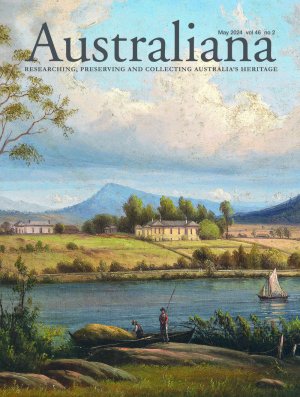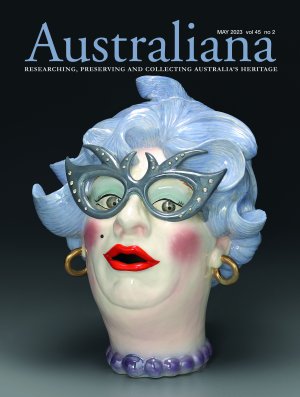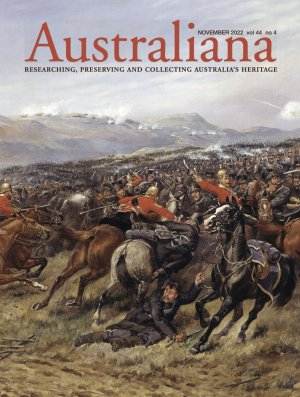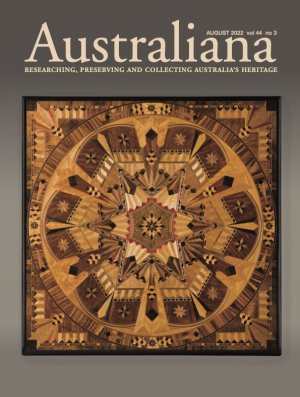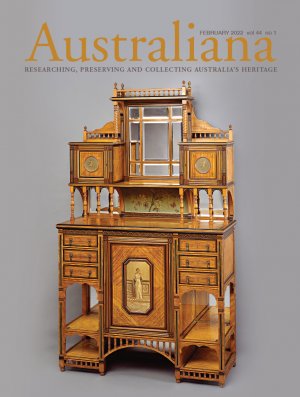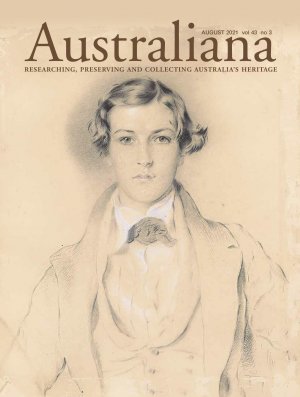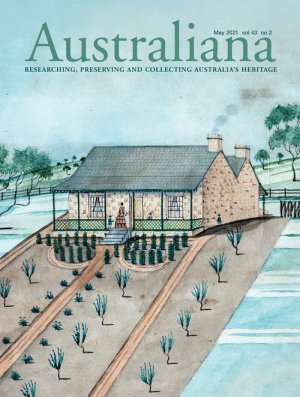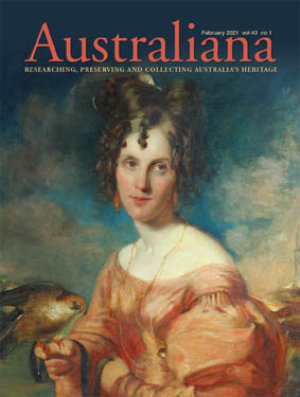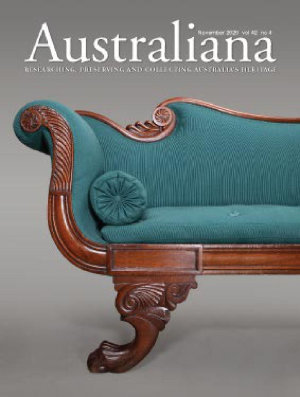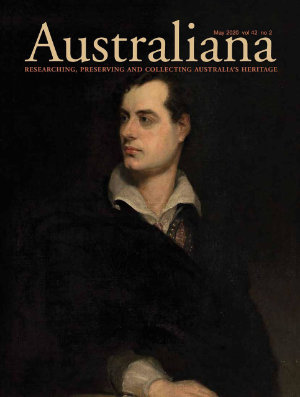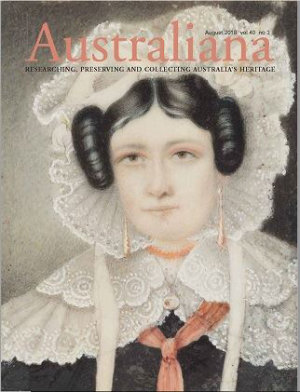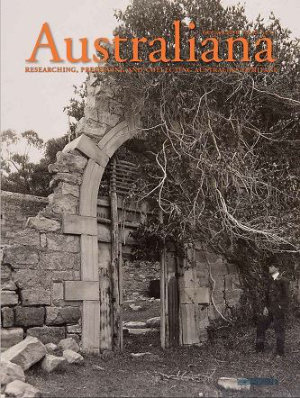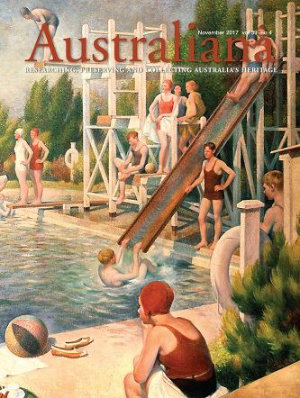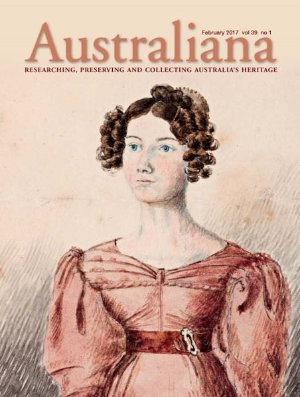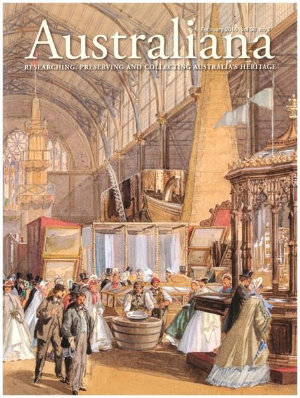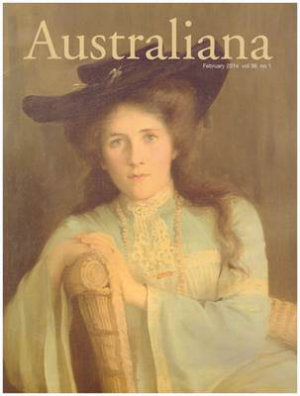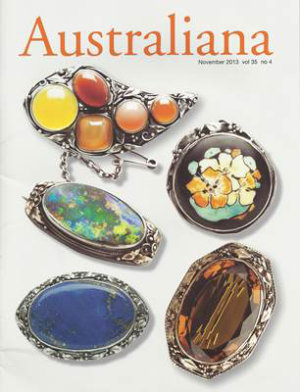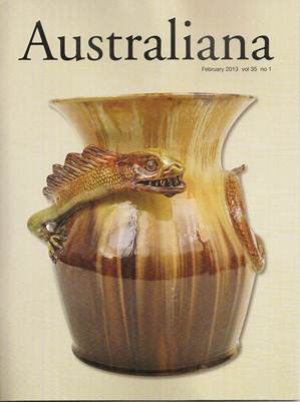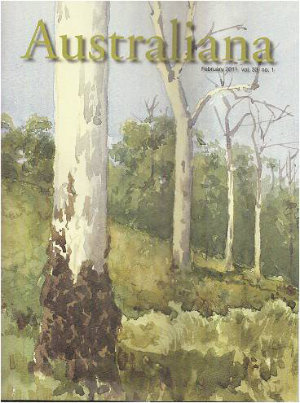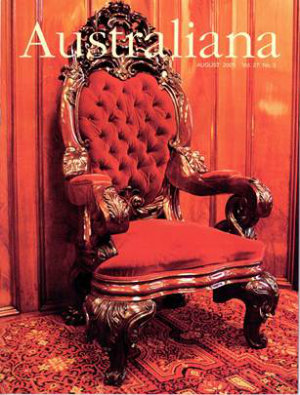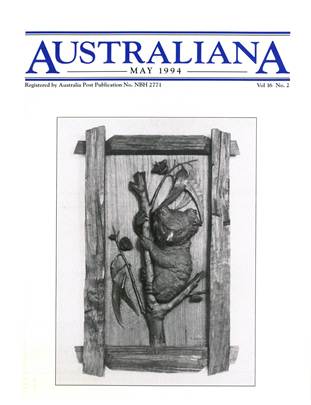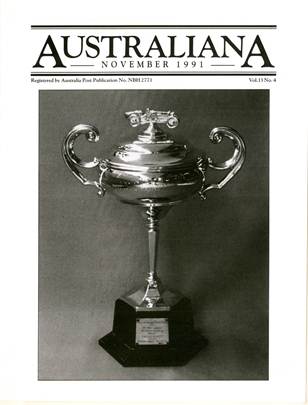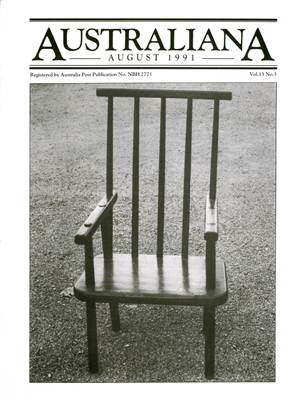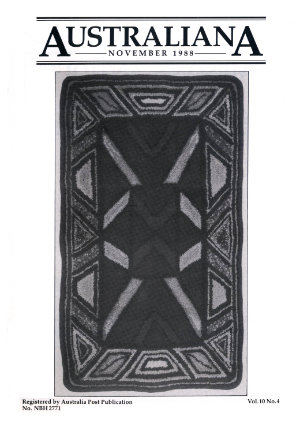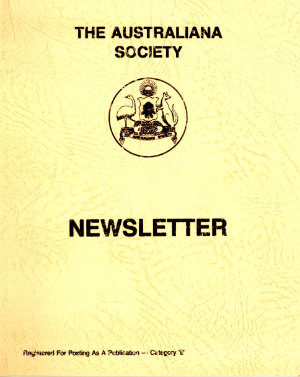Australiana is sometimes accused of being exclusive, publishing articles only on fine, expensive, early-19th century art and artefacts associated with famous men or families from the Eastern States. South Australian contributor Peter Lane delves into the makers and designers of early 20th cent...
The subject of this book is coins
that have had their surfaces engraved, repurposed to communicate private and public messages. It covers the whole spectrum of engraved coins created
in Great Britain and forms a cultural backdrop of Australian culture, which pre-gold-rush era was predominantly
a ...
Polished-brass and chrome-plated aeroplanes were popular World War II mementoes – but how were they made and why did they take off in Australia?
BOOK REVIEW BY MICHAEL LECHRuth Lane Poole: a woman of influence. Canberra Museum and Gallery, 2021, 58 pages. BOOK REVIEW BY ANNE-MARIE VAN DE VENChristine Stewart,
Collits’ Inn: Uncovering the Past, Tellwell, Australia 2021 ISBN 978-0-2288-3720-6
I trust all members had an enjoyable festive season with the family and friends they were fortunate enough to be able to see. As I have stated all too often, COVID never ceases to amaze with the number of twists and turns it continues to deliver. Who would have ever thought that, with the vaccination levels mos...
BOOK REVIEW BY ANNE-MARIE VAN DE VEN Gavin Fry, Havekes Painter, Sculptor, Ceramicist, Beagle Press, Canberra 2020. Hardcover, 168 pp, 32.5 x 27.5 cm, ISBN 987-0-947349-63-9, RRP $99.
BOOK REVIEW BY PETER LANE Justin Gare, Donald Leslie Johnson and Donald Langmead, Colonial Vision Adelaide Kingston &am...
BOOK REVIEW BY PETER LANE Noris Ioannou Vernacular Visions: A Folklife History of Australia: Art, Diversity, Storytelling Wakefield Press, Mile End SA, 2021. Hard cover, 275 pp, 26 x 27 cm, RRP $79.95
When small change was hard to obtain, some merchants minted and branded their own unofficial currency. Tokens were used as normal currency, accepted by everyone everywhere until British coins became readily available. Copper ‘token’ pennies and halfpennies were circulating in all the Australian colonies in ...
Lieutenant James Cook took various gifts on his voyages of discovery, to distribute to Indigenous people whom he might encounter. Peter Lane draws attention to the only example of one of Cook’s medals found in Australia, a memento of friendly contact between the European explorers and Indigenous Tasmanians in...
In 1856, Governor Denison laid the foundation stone for Daniel Cooper's Woollahra House at Point Piper. The stone was designed to hold an engraved copper box containing coins and a medal. This box was re-used for the foundation ceremony of a later Woollahra House in 1883, and unearthed when it was demolished in...
NSW has always had the most Australiana Society members. Though Sydney has held Australiana Society events since 1978, only recently have ‘chapters’ been established in Tasmania and Queensland, with their own committees and developing their own programs. South Australia has a ‘study group’ and convenor ...
A Rats of Tobruk wood panel falls under the category of “trench art”: decorative objects made by soldiers, prisoners of war, or civilians that are directly linked to armed conflict or its consequences. This term is a misnomer as these objects were rarely, if ever made in the trenches. Many were made from sc...
If you think that a history of the numismatic collection held by the Art Gallery of South Australia would be a dry read of limited appeal, you are certainly in for a pleasant surprise with Peter Lane’s new book. It is a good read, full of life and interest.
Few of us spend enough time cataloguing, photographing and managing our collections – subjects we will address in future issues. The Art Gallery of SA’s collection of “fire marks” put out by insurance companies has been in storage for over 70 years, but now they have been photographed, and catalogued by...
Religion was much more prominent and pervasive in 19th-century Australia than it is today, and South Australia was more tolerant of all sects than the other colonies. Peter Lane discusses the foundation scroll laid by Governor Gawler for Adelaide’s Wesleyan Methodist Chapel, constructed less than two years af...
Dr Annette Gero’s article “Wartime quilts” in the May 2015 Australiana stimulated Peter Lane to contact her about an Anglo-Boer War keepsake. Trooper Ernest Worrall of South Australia had drawn images and words on this rather small scrap of khaki fabric in 1902. Mementoes of that war are rare and Dr Gero ...
Seldom do prisoner of war trench art objects indicate where they were made. One that does is carved from wood in the shape of continental Australia, with the words and date “Murchison den [the] 24.8.1941” together with a stylised Australian coat of arms.
For centuries, coins and medals have depicted maps of Australia, although rarely if at all have they been studied by scholars. Perhaps this is because of their limited contribution to cartography, as they were used mainly in a political sense. Perhaps collectors and academics are simply unaware of their existen...
The Wallis album is closely linked to the two chests through Captain James Wallis (1785?–1858). Wallis, appointed commandant of the Newcastle penal settlement by Macquarie in 1816, had the Macquarie chest made as a parting gift for Governor Macquarie around 1818. It is possible that Wallis, who retired from t...
